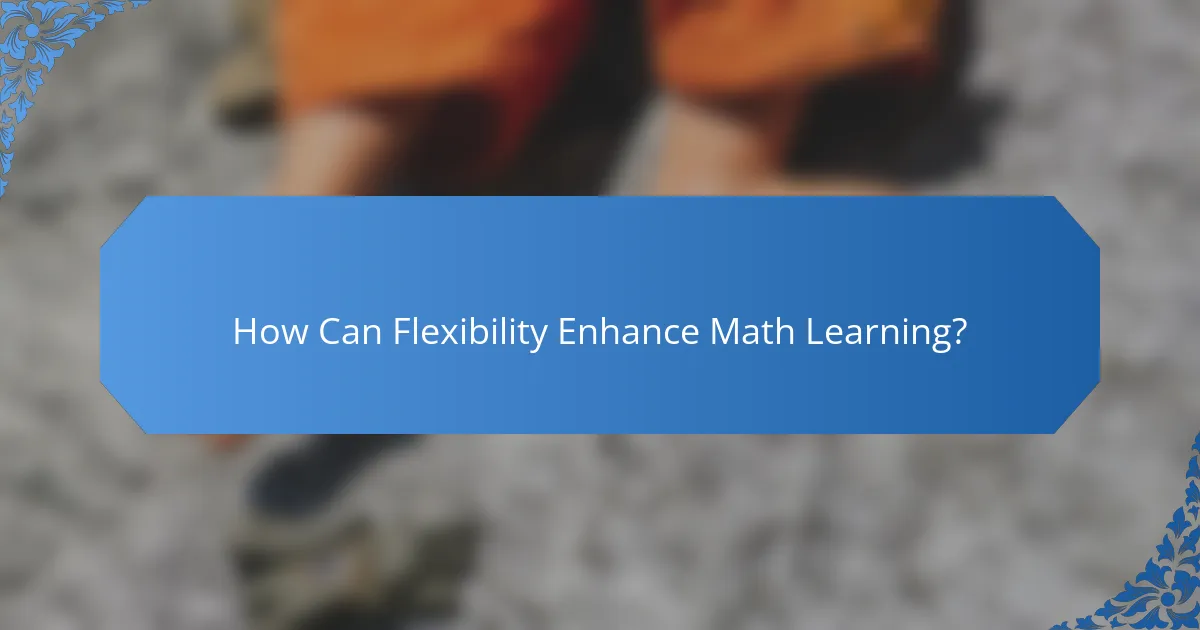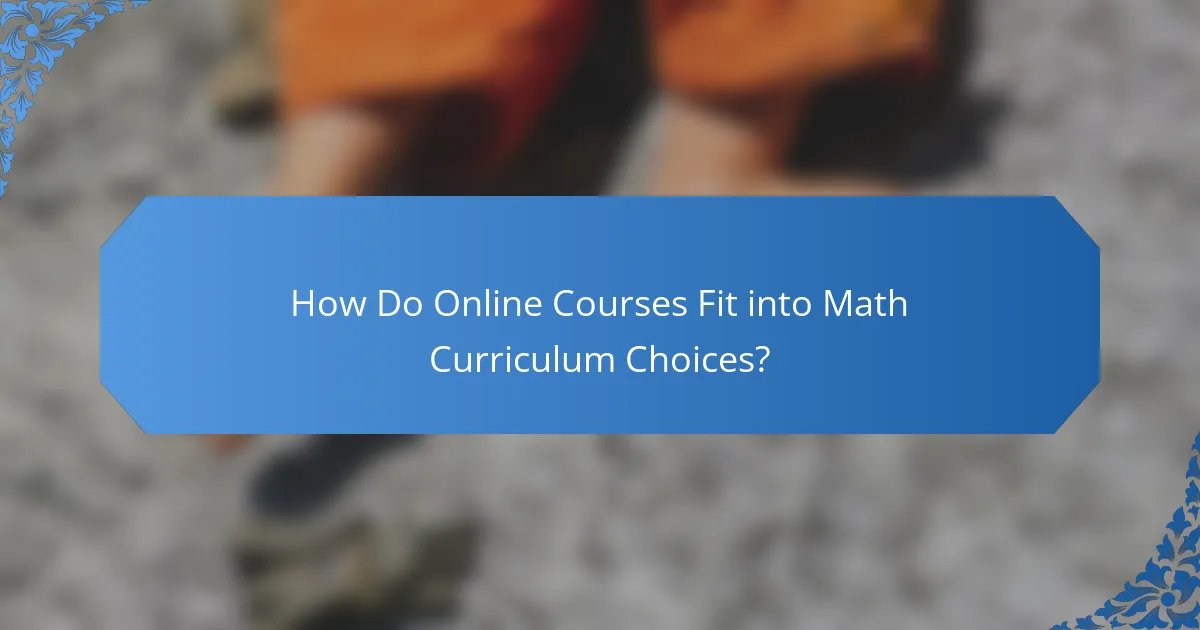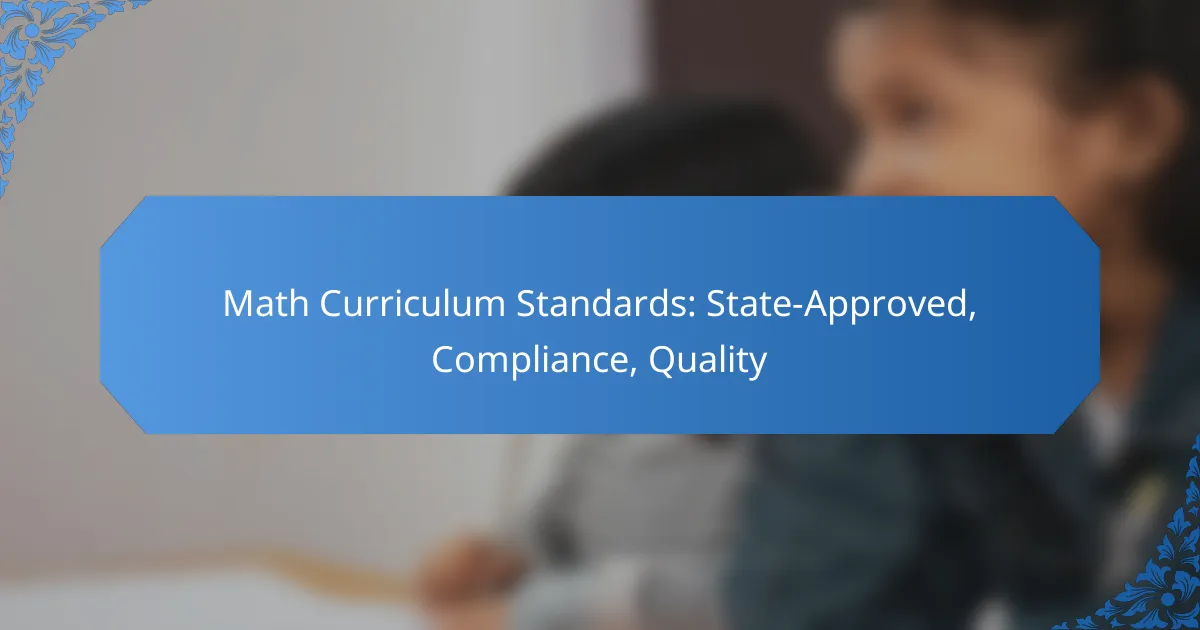Choosing the right math curriculum for homeschooling can greatly enhance a student’s learning experience by offering diverse approaches tailored to various learning styles. With options ranging from online courses to hands-on activities, flexibility and engagement are key components that foster a deeper understanding of mathematical concepts. By incorporating interactive strategies, students can find relevance in their studies, making math both enjoyable and effective.

What Are the Best Math Curriculum Options for Homeschooling?
The best math curriculum options for homeschooling include a variety of approaches that cater to different learning styles and preferences. These options range from online courses to hands-on kits, providing flexibility and engagement for students.
Online Math Courses
Online math courses offer structured lessons and interactive content, making them a popular choice for homeschooling families. Platforms like Khan Academy and Mathletics provide comprehensive curricula that can adapt to a student’s pace and skill level.
When selecting an online course, consider factors such as the curriculum alignment with educational standards, user interface, and the availability of progress tracking. Many courses offer free trials, allowing you to assess their suitability before committing.
Hands-On Learning Kits
Hands-on learning kits are designed to make math concepts tangible and engaging through physical activities. These kits often include manipulatives, games, and experiments that help students grasp mathematical principles in a practical way.
Look for kits that align with your child’s learning objectives and interests. For example, kits focused on geometry might include building blocks, while those for arithmetic could feature card games. This approach can enhance retention and understanding.
Interactive Math Apps
Interactive math apps provide a fun and engaging way for students to practice math skills on mobile devices. Apps like Prodigy and Zearn offer gamified learning experiences that motivate children to solve problems and advance through levels.
When choosing an app, consider its educational value, ease of use, and whether it tracks progress. Many apps are free or have low-cost subscriptions, making them an accessible option for families.
Traditional Textbooks
Traditional textbooks remain a staple in many homeschooling environments, providing a structured approach to learning math. They often include exercises, examples, and assessments that align with state standards.
When selecting a textbook, evaluate its clarity, layout, and the depth of content. Look for editions that offer teacher guides or supplementary resources to enhance the learning experience.
Customizable Curriculum Plans
Customizable curriculum plans allow parents to tailor their child’s math education to specific needs and interests. This approach can combine various resources, such as online courses, textbooks, and hands-on kits, to create a personalized learning path.
To develop a customizable plan, assess your child’s strengths and weaknesses in math, and set clear learning goals. Regularly review and adjust the curriculum based on progress and engagement levels to ensure it remains effective and enjoyable.

How Can Flexibility Enhance Math Learning?
Flexibility in math learning allows students to progress at their own pace, adapt to their individual needs, and engage with real-world applications. This approach can lead to deeper understanding and retention of mathematical concepts, making learning more effective and enjoyable.
Personalized Learning Pace
Personalized learning pace enables students to master concepts before moving on, reducing frustration and building confidence. For instance, a student struggling with fractions can spend additional time practicing until they feel comfortable, while a faster learner can advance to more complex topics without delay.
To implement this, consider using a curriculum that allows for self-paced learning, such as online platforms or modular resources. Regular assessments can help identify when a student is ready to progress, ensuring they are adequately prepared for subsequent material.
Adaptive Learning Technologies
Adaptive learning technologies use algorithms to tailor educational content to a student’s unique learning style and pace. These tools can adjust the difficulty of problems based on real-time performance, providing targeted practice where needed.
Examples include platforms like Khan Academy or IXL, which offer personalized pathways through math topics. Utilizing such technologies can enhance engagement and help students stay motivated, as they receive immediate feedback and support tailored to their specific needs.
Real-World Application Opportunities
Integrating real-world applications into math learning makes concepts more relatable and engaging. For example, using budgeting exercises can help students grasp percentages and financial literacy, while measuring ingredients in cooking can illustrate fractions and proportions.
Encourage students to explore math in everyday situations, such as calculating discounts during shopping or analyzing sports statistics. This practical approach not only reinforces mathematical concepts but also demonstrates their relevance in daily life, fostering a deeper appreciation for the subject.

What Engagement Strategies Work for Math Curriculum?
Engagement strategies for math curriculum focus on making learning interactive and relevant, enhancing student interest and retention. Techniques like gamification, project-based learning, and collaborative environments can significantly boost motivation and understanding in mathematics.
Gamification Techniques
Gamification incorporates game elements into math learning to increase engagement. This can include point systems, badges, and leaderboards that reward students for completing tasks or mastering concepts.
For example, using platforms like Kahoot! or Quizizz allows students to compete in quizzes that reinforce math skills while making learning fun. Consider setting up weekly challenges to maintain interest and encourage participation.
Project-Based Learning
Project-based learning (PBL) involves students working on real-world problems, applying math concepts to tangible projects. This approach fosters deeper understanding as students see the relevance of math in everyday life.
An example of PBL in math could be designing a budget for a hypothetical event, where students must calculate costs, allocate funds, and make financial decisions. Ensure projects are aligned with learning objectives to maximize educational value.
Collaborative Learning Environments
Collaborative learning encourages students to work together, sharing ideas and solving problems as a team. This method promotes communication skills and allows students to learn from one another.
Consider forming small study groups where students can tackle math problems collectively. This not only enhances understanding but also builds a supportive community. Be mindful to rotate group members to expose students to diverse perspectives and problem-solving approaches.

What Criteria Should You Use to Choose a Math Curriculum?
Choosing a math curriculum involves evaluating several key criteria to ensure it meets your child’s educational needs. Focus on compatibility with their learning style, age appropriateness, and cost-effectiveness to make an informed decision.
Learning Style Compatibility
Understanding your child’s learning style is crucial when selecting a math curriculum. Some children thrive with visual aids, while others may prefer hands-on activities or auditory instruction. Assess whether the curriculum offers diverse teaching methods that align with your child’s preferences.
For example, if your child learns best through interactive activities, look for programs that include manipulatives or online games. Conversely, if they excel with structured lessons, a traditional workbook approach may be more suitable.
Age Appropriateness
Ensure the math curriculum is suitable for your child’s age and developmental stage. A curriculum that is too advanced can lead to frustration, while one that is too basic may not engage them. Review the content and skills covered to match their current abilities.
Most curricula are designed with specific age ranges in mind, so check for recommendations or guidelines. For instance, a program aimed at early elementary students should focus on foundational concepts like addition and subtraction, while a middle school curriculum might introduce algebra and geometry.
Cost-Effectiveness
Cost is a significant factor when choosing a math curriculum, especially for homeschooling families. Consider not only the upfront costs of materials but also any ongoing expenses, such as subscriptions or additional resources. Aim for a balance between quality and affordability.
Many effective curricula are available at various price points, from free online resources to premium programs costing several hundred dollars. Evaluate what fits your budget while ensuring it provides comprehensive coverage of math concepts.

How Do Online Courses Fit into Math Curriculum Choices?
Online courses are a flexible option for integrating math into homeschooling or alternative education settings. They offer structured learning paths while allowing students to progress at their own pace, making them an attractive choice for families seeking personalized education.
Accessibility and Convenience
Online math courses provide easy access to a wealth of resources and instructional materials from anywhere with an internet connection. This flexibility allows students to learn at times that suit their schedules, which can be particularly beneficial for families with varying commitments.
Many online platforms offer courses that cater to different learning styles, including video lectures, interactive quizzes, and downloadable resources. This variety helps keep students engaged and allows them to revisit challenging concepts as needed.
When selecting an online course, consider factors such as the platform’s user interface, the availability of support, and the alignment with educational standards. Reading reviews and trying out free trials can help ensure you choose a program that meets your family’s needs.



